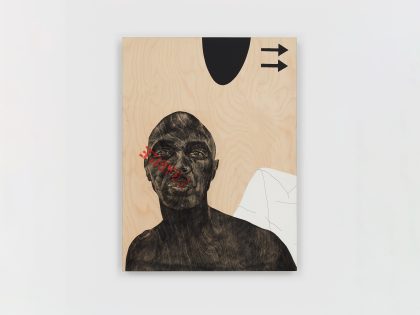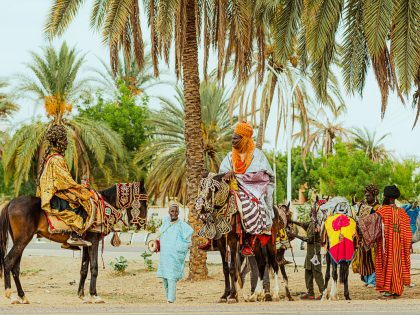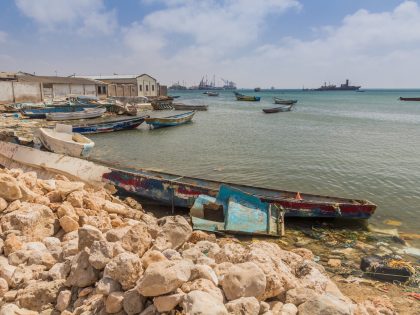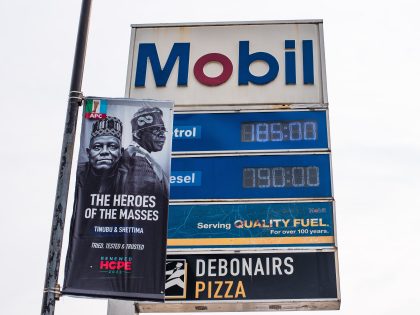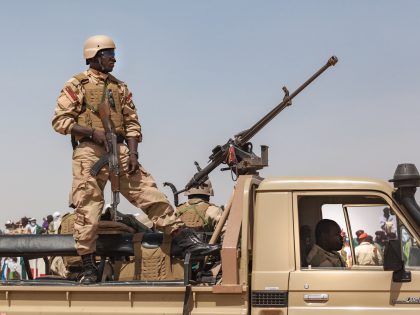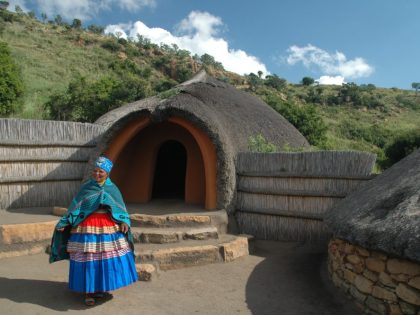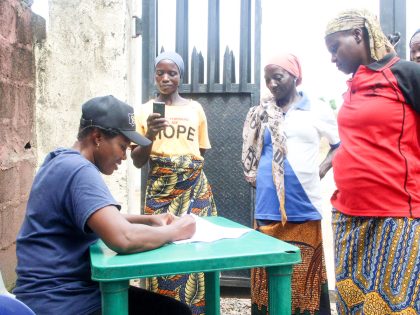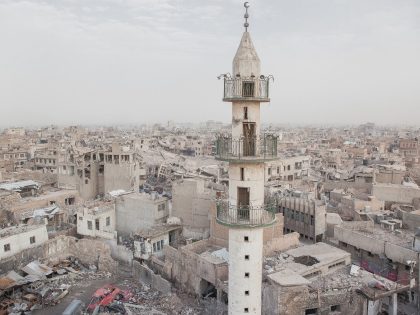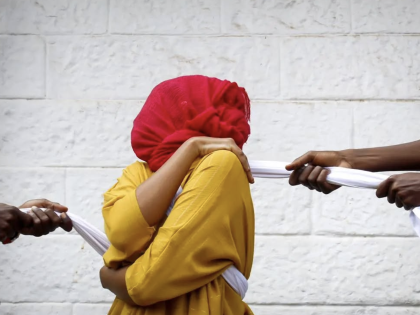The Young Lords In New York Exhibit: A timely and provocative look at a political movement

In 1970, a young man of color who was a member of a radical group was sent to prison; shortly thereafter, he was found dead under suspicious circumstances, and his death ruled a suicide. The group he was a part of, the Young Lords, then marched the streets in a funeral procession style protest.
This narrative sounds eerily familiar to current instances of racism and the headlines we’ve been reading in present day America. The issues about which The Young Lords organized and mobilized themselves, and the climate they sought to change back in the 1960s, clearly impact us even today.
Yet those who are now involved in the Black Lives Matter movement and those engaging in hashtag activism against police brutality towards people of color, and in fighting for visibility for the underserved, underrepresented and underfunded, may not know about the Young Lords. We are much more familiar with groups like the Black Panthers, who the Young Lords modeled themselves after. But we should know about both groups.
Perhaps we could borrow a page or two from the Lords. After all, the Young Lords faced just as much resistance from local and state government, as well as criticism from within its own group and the general public. However, they were still able to create an enduring legacy, model how to protest injustices, and demand change.
The Young Lords were a group opposed to racism who demanded equality in healthcare, increased access to services for the poor working class and better education, fought police injustice, advocated for attainable food and child care options.
Like the Panthers, they demanded and were successful in implementing a free children’s breakfast program. Members of the group ranged in age from 18 to 25 and were diverse, but mainly of Puerto Rican descent.
Their movement had an expansive—some would say idealistic—agenda, focusing on equality in all its forms, self-liberation for the island, gender equality, and opposition to the American army, all outlined in their 13 Point Program and Platform.
In New York, its primary purpose was to fight for the daily injustices faced by the Puerto Rican community, a community which at the time (and to a lesser degree today) faced a myriad of socio-economic adversities and who were largely ignored by local city government. Initially, the group’s organizing began in Chicago, but they formed a chapter in New York City and a few other cities around the country that had concentrated groups of Puerto Ricans.
In their political ideology, they were modeled after the Black Panthers—the Black Nationalist group founded in the mid 1960’s who used militancy as a means of demanding justice. The Lords’ style choices reflected the Panther’s codes of dress, including the use of combat boots, berets and army style fatigues. While they paid homage to the Panthers, they extended the quest for justice to the Puerto Rican community.
Decades after they were active, how can we remember and memorialize the Lords, and their achievements? The challenge for museums and present day sites of memorialization is to capture a political movement through aesthetic symbols that best communicate their message and their activism without reducing them to a fashion statement.
This is one of the many challenges that The Bronx Museum of the Arts (who organized the project), El Museo del Barrio (The Museum of El Barrio) and the Loisaida Center faced when they curated a tri-part exhibition that simultaneously documents and honors the legacy of the Young Lords.
¡Presente! The Young Lords in New York, exhibition, currently on display in New York City, vividly captures the scope of The Young Lords movement while avoiding the trap of romanticizing them or minimizing their relevance.
The exhibition spans across three cultural centers in neighborhoods where the Young Lords were most active in the New York City area: one on the lower East side, a second in East Harlem, and the third in The Bronx.
Each exhibit uniquely highlights some of the group’s actions, and complements each other—even as they overlap in places. These three areas are the site of the Young Lords’ most visible actions and some of their most important work.
On the Lower East Side, where the group was founded, The Loisaida Center pays particular attention to the art created while the group was active. The Lords recognized that art was an important part of the process of community-making; they knew that taking ownership of, and having pride in one’s history and culture was a way of occupying spaces in which they were regarded as “foreign” and “other.”
Much of this exhibit is focused not just on the social activism, but also on the effects of that activism on artists, reflected in photographs and videos on display there, including the work of photographers like Hiram Maristany and Máximo Colón.
The curators also draw attention to the group’s communal art history by recreating makeshift tents, which served as homes and villages for some artists. The group once turned a building in that area into an artist space known as the New Rican Village, where they used theatre and art as part of their political arsenal. The exhibit at that location also pays close attention to the role of gays and lesbians in the movement, as that neighborhood was the site of the Young Lords Gay and Lesbian Caucus.
A video plays on the wall with footage of transgender activist Sylvia Rivera demanding respect and visibility from her peers. For me, looking at all this as someone born long after the Lords were active, the footage is equal parts moving and revelatory. It feels, as does the rest of the exhibit, way ahead of its time.
The exhibit in The Bronx Museum of the Arts highlights, among other things, the group’s takeover of Lincoln hospital in that very neighborhood, after children were poisoned from lead exposure upon being admitted to the hospital.
One installation there focuses on the women in the Young Lords and members of the Young Lords Women’s Caucus, a group demanding equal treatment within its members and with regards to women’s issues.
Similarly, a few pieces of art in the museum also focus on the Young Lords call for an end to the forced sterilization of Puerto Rican women on and off the island. In the middle of the gallery is a pair of Nike Air Force One Sneakers designed by Young Lords member Felipe Luciano, where the infamous Nike swoosh is changed into a machete. Young urban communities, like the ones in the Bronx, place a high level of interest and value on sneakers so the inclusion is startling in its level of cultural resonance, and for its ability to comment on both deadening consumer practices and—contradictorily—the possibility of revolution.
The final location of the exhibit at El Museo del Barrio is located where the Young Lord’s garbage-dumping protests and their peaceful occupation of the First People’s Church occurred. Puerto Rican Obituary, a poem by Lords member and poet Pedro Pietri, plays on a loop in the museum on one wall directly across from another wall adorned with four semi-automatic weapons.
Each weapon is emblazoned with one of the following words: “Health,” “Food,” “Housing” and “Education.” Both pieces—the poem and the weapons painted with slogans—illustrate that what was at stake was literally the life and death of the Puerto Rican people; without the mobilization and awareness that the Young Lords brought, local officials would have continued to view this community as invisible, and pretend they didn’t need basic services that were available to their more affluent, white neighbors.
The three exhibits are striking for many reasons but one in particular: the photographs and art are filled with black and brown faces, reflecting that Puerto Ricans are comprised of mixed and multiethnic lineage.
Often, in Latino communities, the darker you are, the less stature you have, the less beautiful you are, the less you matter. Those who are “dark” are excised from the albums of family history, and even national history. But those faces—which could have once again been erased from memory—are on full display here, on the frontlines of this movement.
It’s no coincidence that the Young Lords aligned with the Black Panthers. In New York City, Blacks and Latinos live amongst each other, face the same injustices and endure the same hardships. For all intents and purposes, the two groups are the same. The interests that the Black Lives Movement is attempting to foreground are important for Latinos too, no matter how distant some of us might think we are from African Americans.
It’s impossible to overstate just how relevant a group like the Young Lords feels in today’s political and social landscape. The group’s rallying call—which was also the name of their organizational newsletter (also on display in all exhibits)—was “P’alante.” “P’alante” is a shortened version of the Spanish phrase “para adelante,” which means “moving forward.” In 2015, Americans are still looking to do the same.
An exhibit like ¡Presente! The Young Lords in New York allows us a moment to look back at how far we have come. Or how far we haven’t.









